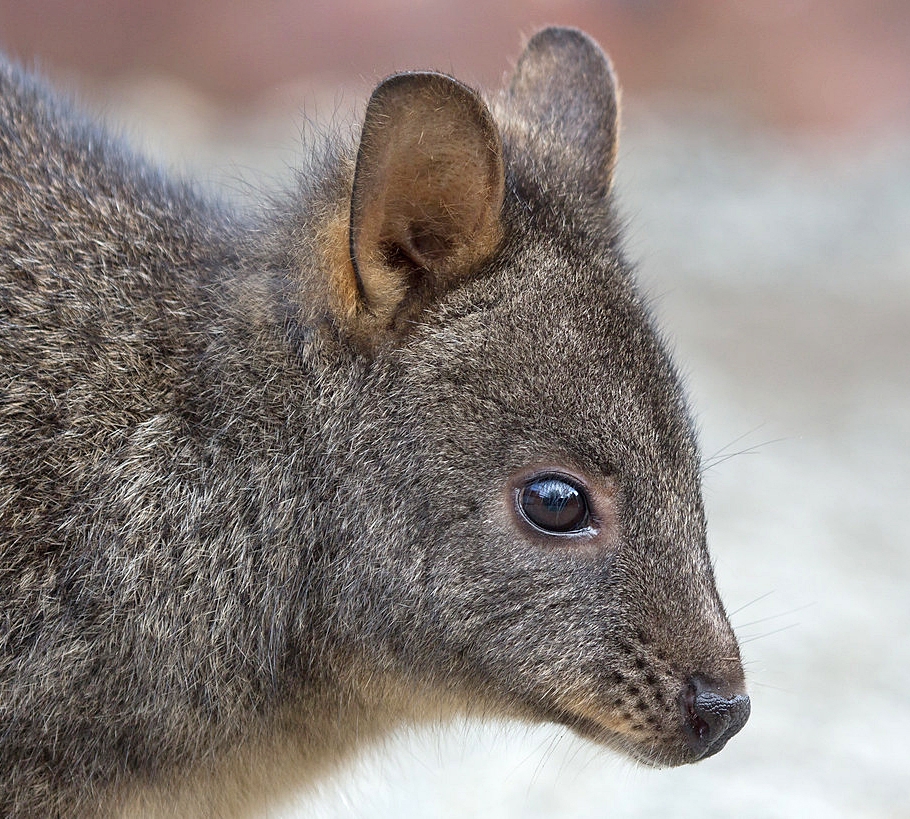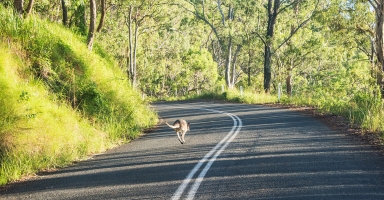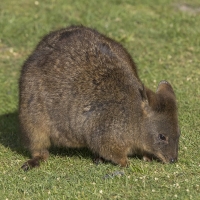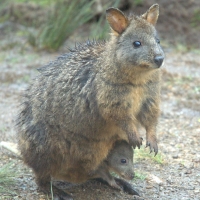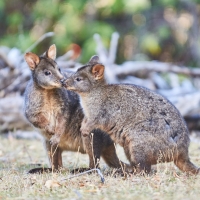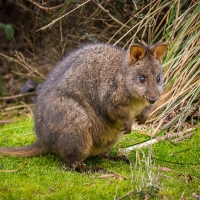Also known as the Rufous-bellied Pademelon, they are only found in Tasmania. This quirky little animal always appears to be smiling. The unusual common name, Pademelon, is of Aboriginal derivation.
The Tasmanian Pademelon is a small stocky animal with a relatively short tail and legs to aid its movement through dense vegetation. It ranges in colour from dark-brown to grey-brown above and has a red-brown belly.
Males, which are considerably larger than females, have a muscular chest and forearms, and reach up to 12 kg in weight and 1 - 1.2 m in overall length, including the tail. Females average 3.9 kg in weight.
Although there is no specific breeding season, 70% of Tasmanian Pademelon births occur around the beginning of winter. Gestation is 30 days. Pouch life is 6.5 months. The young are weaned at 7 - 8 months and are sexually mature at 14 - 15 months. Longevity in the wild may be 5 - 6 years.
Tasmanian Pademelons are widespread throughout the state of Tasmania. They are commonly seen after dusk in rural and even suburban areas.
Tasmanian Pademelons are nocturnal, spending the hours of daylight in thick vegetation. After dusk, they move onto open areas to feed, often needing to cross roads. This is when they become vulnerable to passing traffic.
Sadly, Tasmania is known as the “Roadkill Capitol of the World” with over 500,000 animals being killed each year. Research shows that a large percentage of Wildlife killed on Tasmanian roads are Pademelons. Many are females carrying small Joeys in the pouch, or being followed by juvenile Joeys still relying on Mum for milk. Most of these Joeys die a slow horrible death.
A lucky few are rescued and taken to qualified Wildlife Carers who nurture them and rehabilitate them so they can be released back into their natural habitat.
Everyone is responsible for helping to reduce the number of animals being killed on our roads. We can all help by taking care while driving at night and slowing down between dusk and dawn. “Roads Don’t Kill, Drivers Do”

